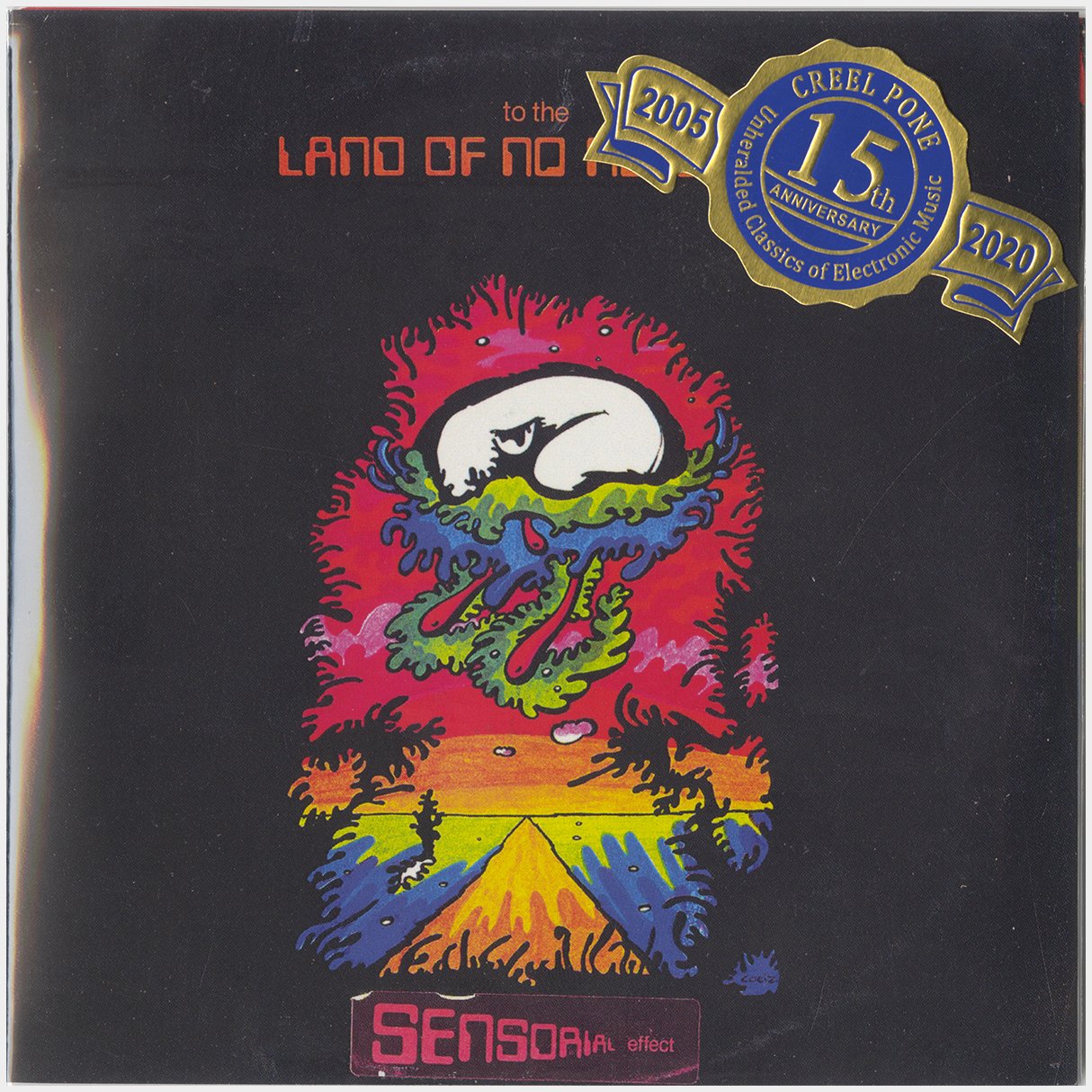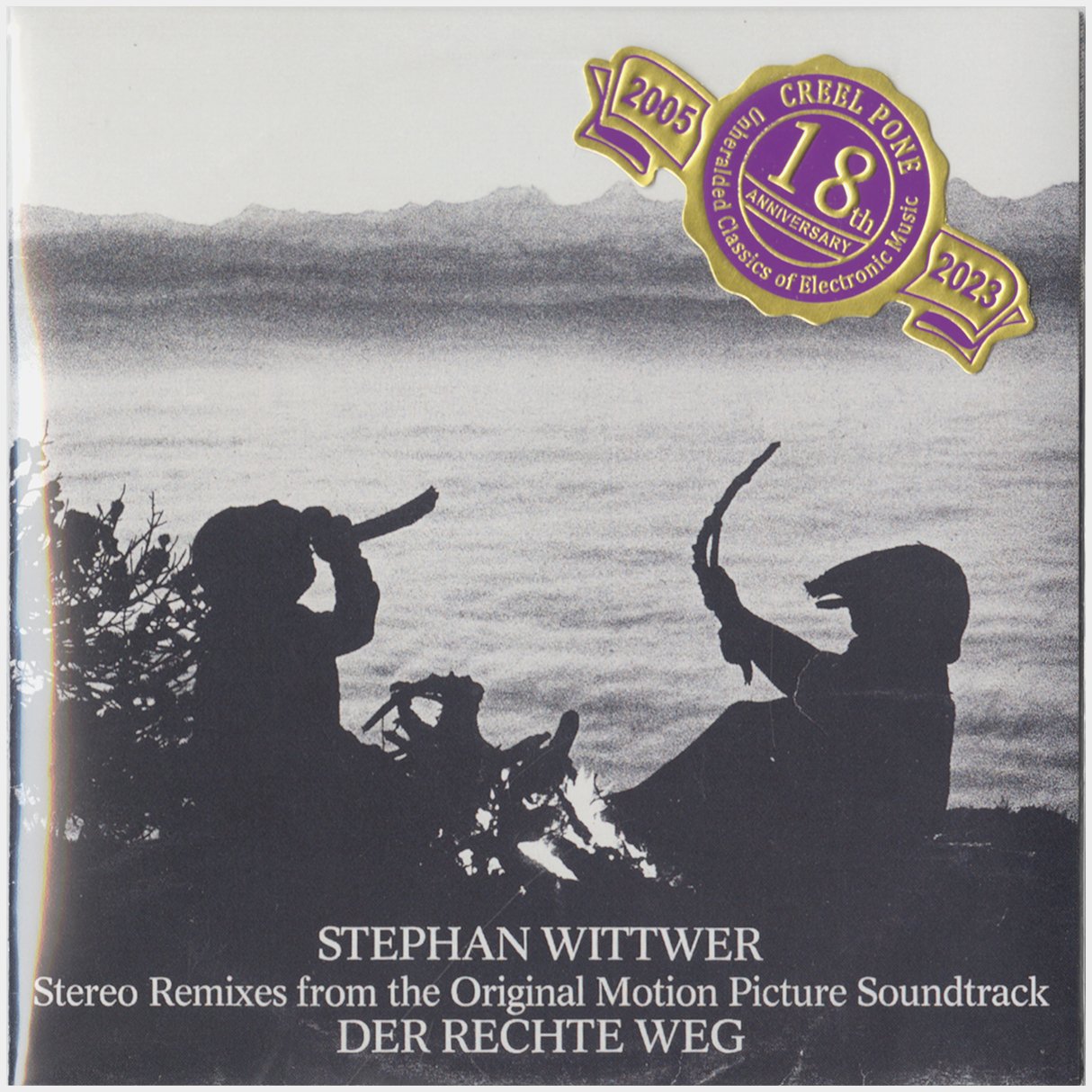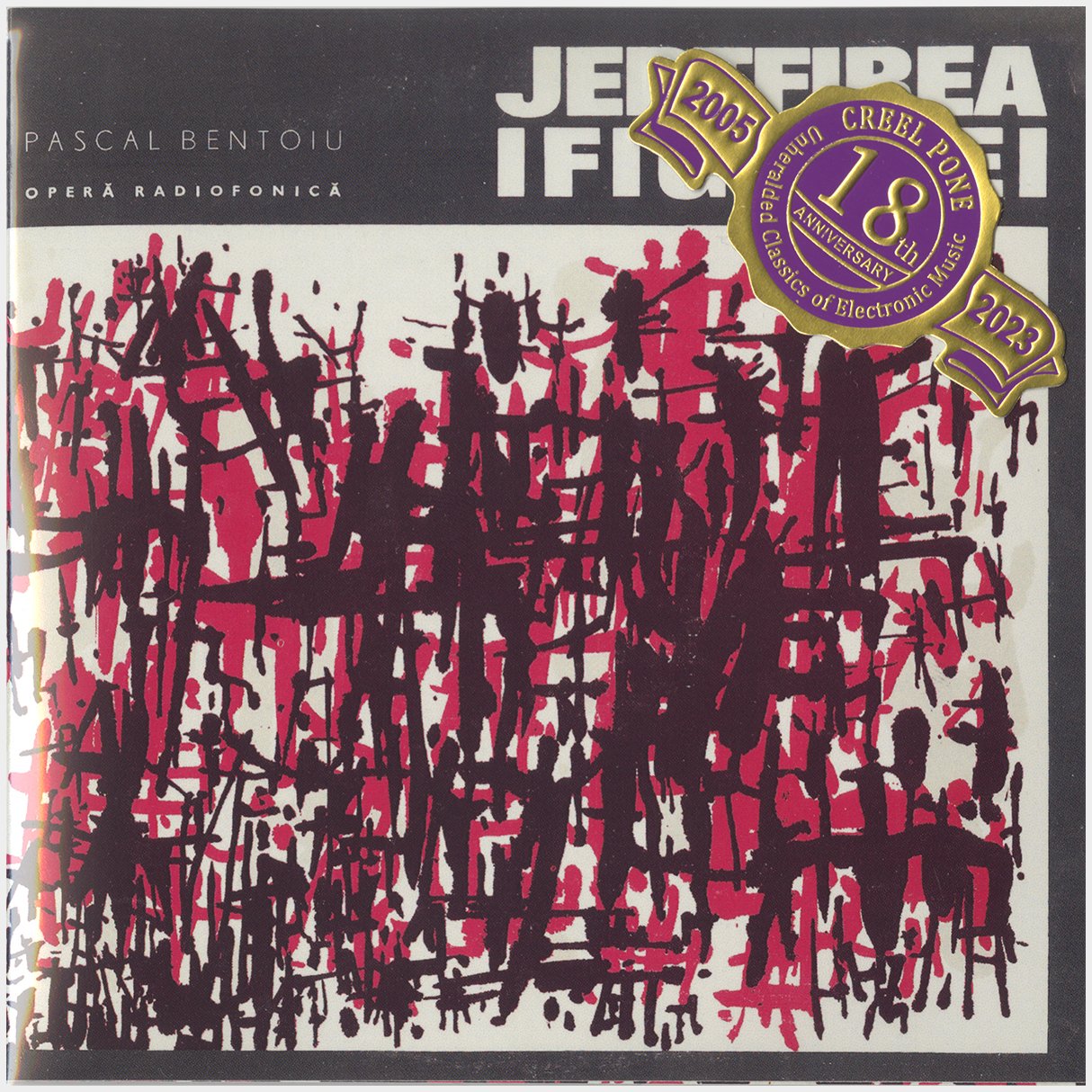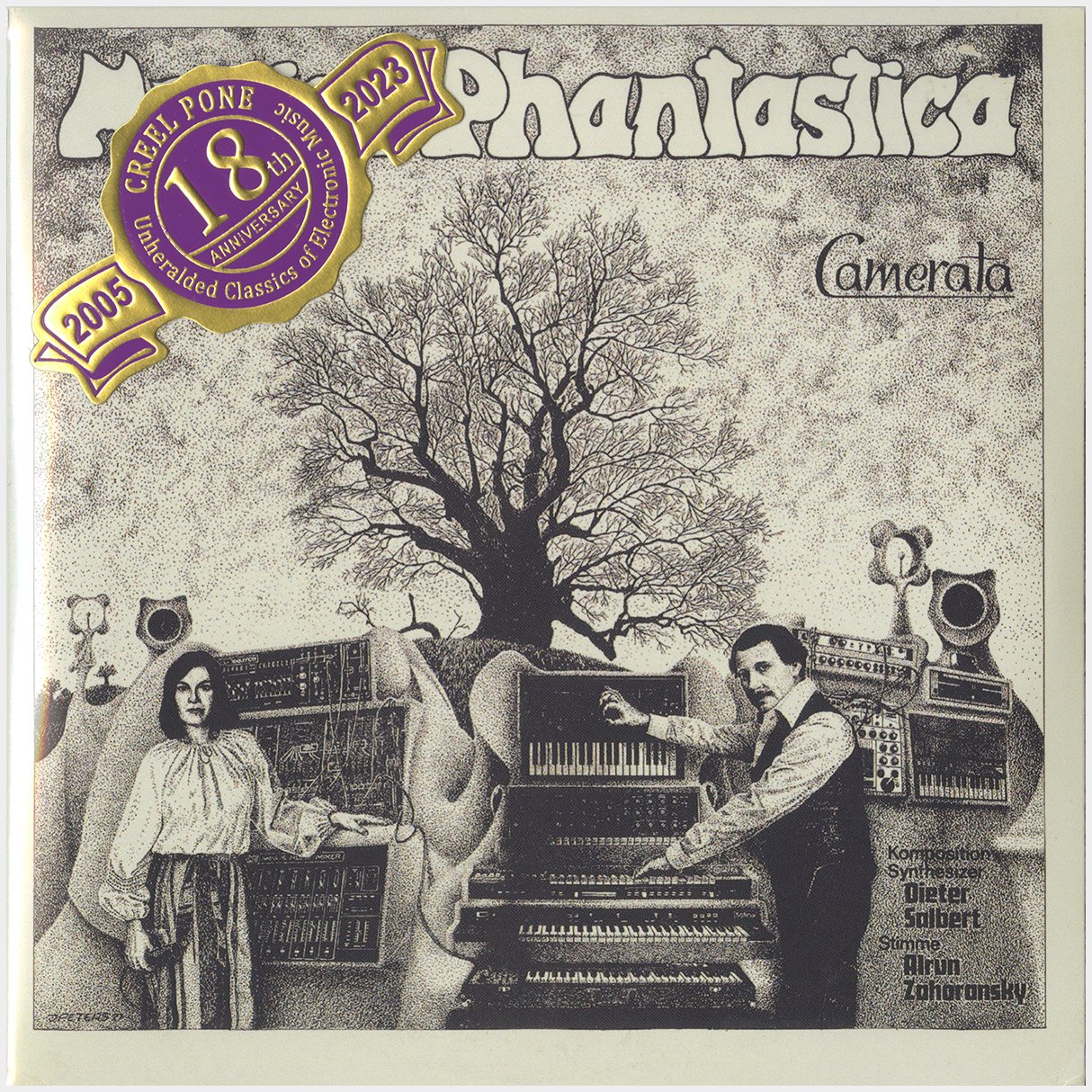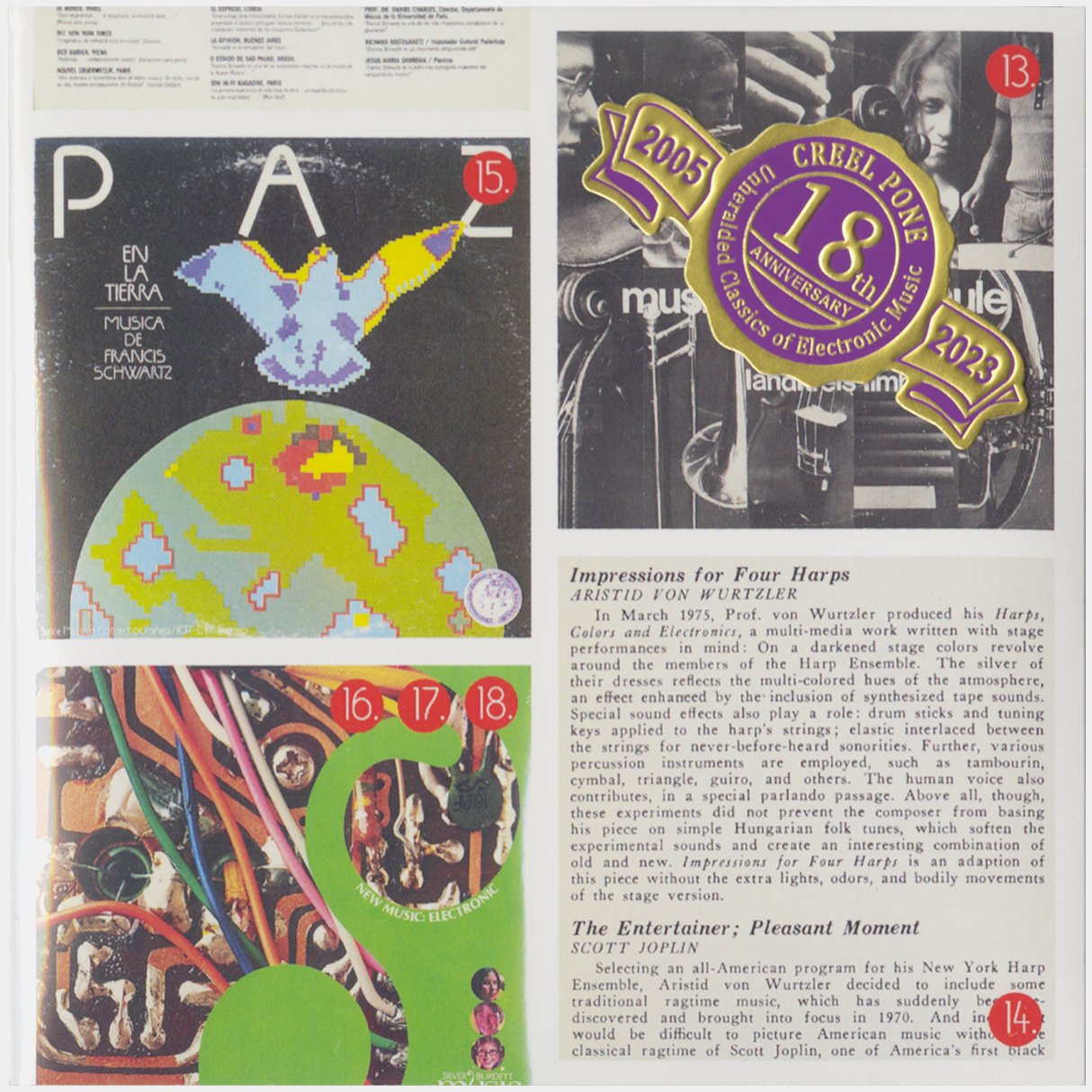In 2003, after the 3-year-long cycle around Playthroughs finally wound down, I returned to Boston & started running Mimaroglu Music Sales out of The Reckankomplex, the 4-story co-op house I shared with a number of like-minded artists, musicians, and creative types on the Cambridge/Somerville border. The ‘komplex had long been a place for touring musicians to spend the night to a few days between concerts, and the energy there was always convivial; of many fond memories from this time were the long, slow Sunday morning sessions/brunches following a late gig the night before, wherein the members of whatever act was staying over would sit around with the residents drinking coffee, listening to records, & just being in awe of music.
A repeated phrase often uttered when I shared the discovery of some obscure gem found out in the wild was “You should really reissue this!”, but then, very much as now, I lacked the patience, resources, & follow-through to make such an enterprise truly successful on a legitimate/glocal scale; to be perfectly honest, the five years I had just spent as Forced Exposure’s Sales Manager really took the wind out of my sails as far as my desire to run a record label went (this was after the demise of Reckankreuzungsklankewerkzeuge, into which I had sunk a considerable amount of energy, only to be partially ripped off in the closure of Caroline’s US distribution company following the release of the “rkk13cd.”, and after the fair-to-middling commercial returns on “Swarm & Dither” & the slow, intentional demise of Hrvatski). The risk-to-reward equations had, historically, sided with the former, and it just seemed crazy to start all of that up again.
Around this time I was extended an invitation to set up a small installation as part of a group show at a local gallery, and my first thought was to have a mock-up of a record shop at exactly 5/12th scale; everything, down to the furniture, cash register, etc. would be reproduced at just under half-size. This was all under the spirit of assemblage & replica; the shop would be full of a mix of known, obscure, and invented records, presented ala Joseph Cornell in a scaled-down diorama. The line of thinking around it was, essentially: “every record store was full of records that you didn’t want; wouldn’t it be incredible to invent full of only the desirable ones?” Albeit in non-playable, replica fashion, sure; Extremely Frustrating (working title). At that point I had recently visited A-Musik, Bimbo Tower, Disk Union, Flesch Records, Gelbe Musik, These Records, etc. for the first times; stores that were overflowing with unknown, regional, tantalizing private-press records that begged further investigation. I scooped them up by the armload, often returning from a lucrative tour with only these to my name, but I wouldn’t have had it any other way; life in Boston was absurdly cheap, easy, and I can’t think of any other way I would have spent my minimal resources as a full-time touring experimental musician.
Large portions of 2003 were then spent meticulously scanning & preparing tiny 5” square record-replicas; everything down to the resealable poly bags & the smallest price-stickers I could find. I would play someone a record, such as Thomas Hamilton’s incredible 1975 Private Press Somnath-label “Pieces For Kohn” LP, then would ruminate on why such a record hadn’t entered the greater consciousness around modular synth-based electronic music in the way that, say, “Silver Apples of the Moon” had, and why the growing disparity around how I felt about each record was so great. If it felt like something had been truly, unfairly been written out of history, I would make a single replica and place it in a small wooden (ironically) CD shelf, in the ersatz “New Arrivals” bin. At this stage I was only thinking of the aesthetics & ideas behind each of the records; trying to be as accurate & faithful in recreating not just the art/spec of each, but all of the flaws & peccadillos of the exact copies I had access to - the bent corners, edge/ring/spine-wear, botched removals of price stickers via acetone, water damage, pen & sharpie marks, doodles, inserts from other people & records, etc. This became something of an obsession; I had complete control over the microcosm of this idealized, personalized, toy-scale musical ecosystem, the Fantasy-League Baseball version of Early Electronic Music.
I forget who it was exactly (my brain is telling me it was one of the traveling Norwegian contingent of Alexander Rishaug, Lasse Marhaug, or Jørgen Træen who stayed for a bit in advance of their first US tour) but upon inspecting the tiny records on the tiny shelf, plainly asked if they were for sale, or trade. At this stage they were just facsimile jackets in sleeves; nothing was inside. As an experiment, I made 10 copies of a CD-R (this was in the days where you had to put a single gold-topped disc in a tray, load the tray into an external SCSI/parallel burner, and not touch the computer while it chewed through its lone resource-owning mono-activity of engraving 40 minutes of 16-bit/44.k audio at just under 1x speed, buffer under-runs be damned) of the aforementioned Hamilton & placed them inside the sleeves & in the rack. Given the foot traffic in the house, they were gone within a few months, and in exchange we had so many copies of the current records, tapes, and discs from the artists that flowed through our lives (which is, in a nutshell, how Mimaroglu started in the first place).
Word quickly spread, and my life as an online shop-owner & occasional musician became somewhat clouded by frequent requests for these “Replications”; we held on to the “trade-only” & “in-person-only” ethos (RRRon Lessard, around this time, had a similar program of individually personalized LPs that were only available in the physical shop in Lowell & discussion of them was strictly forbidden; genius) but in time they slowly made their way onto the Mimaroglu site, much to the chagrin of various parties not limited to the composers, artists, and labels whose work was, incrementally, being “Faxed”. A series of fruitful discussions began taking place (Mr. Hamilton was not enthused, although the existence of the C.P. led directly to the LP in question getting reissued legitimately by friends in his home-turf of St. Louis; amazingly Tod Dockstader got in touch after we’d made a facsimile of his two Boosey & Hawkes Library LPs & was very enthusiastic, leading to a good decade of pen-palling back & forth before he passed away in 2015). Initially, we decided on making runs of 50 copies per title, although this number fluctuated drastically as interest in the series ebbed & flowed.
Just as valid as the series’ origins in the micro-shop installation was the perpetuation of it by a coterie of similarly-minded record collectors & astral travelers, all of whom were quick to send over LPs that they felt were en ligne with the program’s ethos (in truth, I’ve only ever owned about half of the titles in question). It was at this point that the credit for the series was attributed to “Pieter ‘P&C’ Christophssen”, our beleaguered in-house web/designer, who was in fact a Pessoa-esque amalgam of everyone either living at the ‘komplex (paper-cutting and assembly duties were often delineated as household chores) or a member of the so-called “Cabal” of contributors to the shape & flow of the program.
It was PCC who authored (in a hilarious pigeon of “Google-Translate Icelandic™”) the anchor statement & hosted a micro-site on orkstorm.com (RIP):
More interesting than the already great early electronic music that started coming out of France in the late 40s, then Germany in the early 50s, {and so on through the great home-made and self-released music of the early 80s before the Yamaha DX7 and the Synclavier homogenized electronic music production through ushering the "Digital Age"} are the graphic designs and sleeve art that ultimately adorned the saleable LP records of this music.
The one thing we miss when everything's downloaded and put onto our little ipPods or in the computer playing out of those awful little speakers to make us even less interested in music as a powerful, life-changing force is the big package; the 12" Record Sleeve, the record labels, the spines, the inserts... the little things that make records so mysterious. A compact disc is made in a sterile factory, its printed materials are made using a 4-color "process" - an LP Record is made in an environment {or a plant for more organic senses} and printed using a screen-printing "method."
Discounting Nostalgia, The Difference is Quite Real.
1952 - 1984. This was an unheralded era in Design, Art, Music, & Fashion {call it: "DAMF"}; In these years there were more movements taking place than ever in history : Abstract Expressionism, Lettrism, Musique Concrète, The Atomic Age, Elektronische Musik, Conceptual Art, Minimalism, {p}Op Art, Happenings, Fluxus, Mod, Conceptual Art, Free Jazz, Arte Povera, Psychedelia, Photorealism, Edwardianism, Disco, Punk, New Wave, and so on...
All around the world there was invention and discovery in this new electronic music and its visual counterpart. It's hard to imagine a music or design sense that leans exclusively on the future especially now as we're so obsessed with the past.
33 Years ; 33.3~ Revolutions.
So this began as the first ever reissue series for LP covers and related packaging items, with everything printed as closely as possible to exact 5/12 scale including the inserts, label ephemera, booklets. In fact everything but the LP labels and the LP it's self.
But almost immediately people wanted the missing element so we began including the music inside the sleeve on a CD-Recordable. This makes the Creel Pone more expensive to produce than they are sold for; but really it's not about having anything to do with money but just a way for pure and great art both in vision & sound to prosper and be discovered a new.
You can find these little items where we have travelled and have been met with sympathy ::
A-Musik (DE) • Aquarius (USW) • Art Into Life (JP) • Bimbo Tower (FR)
Disk Union (JP) • Exiled (USW) • Fusetron (USE) • Lingering (UK)
Meditations (JP) • Mimaroglu Music Sales (USE) • Omega Point (JP) • Other Music (USE)
Printed Matter, Inc. (USE) • Raash (USW) • Robot (ES) • Synaesthesia (AU)
Tequila Sunrise (USE) • Tochnit Aleph's Rumpsti Pumsti (Musik) (DE)
The True Vine (USE) • Volcanic Tongue (UK) • Weirdo Records (USE) • White Noise (HK)Or if you are in Reykjavik you can just stand in front of Sirkus yelling "CREEL PONE" and hopefully one of us will hear you from the flat and come down and meet you for a drink {It could be that we're already inside ???}
One thing we’ve all been proud of is the lack of an over-arching curatorial sensibility (themes have ranged from Socialism to Spiritualism; gender & identity balance quickly became a focus, and the series long favored International overviews over a continued emphasis on the Domestic continuum). Original aesthetics were always held sacred, as these were what ultimately led to the attraction & perpetuation of a given title. It’s interesting to note that the idea of presenting them as replicas of specific copies of records, rather than reissues of an idealized versions of said, remained from the core ideas clean through the program’s commercial/retail phase. Perhaps this is why people remain so interested in them as artifacts; long past the age of consumption of physical media.
Creel Pone prospered, albeit in on incredibly meager scale; I began sinking perhaps too much of my weekly productivity cycle into the manufacture of physical micro-editions, although I absolutely loved the whole ship-to-shore process of discovering something, researching it in great detail (usually while waiting for the eBay/Discogs package to arrive), coming up with an angle/writing it, then doing all of the scanning (incidentally, all of the images captured on the retrograde, SCSI-only Epson Expression 836XL oversized unit have visible lines from the scratches physically present in the glass scan-surface), transcribing, audio & image restoration & processing, printing (at first all done in-house on perhaps the most ecologically unsound way via Epson inkjet printers & photo stock; later via a series of service bureaus handling, essentially, wedding invitations), burning, assembly, and, eventually, distribution. At one point, after obliterating the write-heads of a series of outboard CD burners in rapid succession, I went as far as acquiring a pro-grade Primera Bravo XR Robotic rackmount unit; one of the great joys of this era was setting up a burn-job as I was leaving the office on a Friday evening, and arriving first thing Monday morning to exactly 56 copies of a fresh stack of that week’s offering, then spending the day feeding them into a refurbished Epson Stylus Photo R220 printer, one-at-a-time.
Over the course of a decade, we managed to drum up 200 discrete editions, all of albums that had either lapsed from the greater public discussion on eerily prescient/precedental Electronic Music, or were albums that were simply never heard at the time that needed the flashlight shone on them for perhaps the first time. Conversations were started, people began thinking differently about Early Electronic Music. A couple of things (re-) entered the canon; all of it was a labor of love, and nothing more.
Around 2015, I moved to Australia with my family, and while there were a good few years of domestic downtime & resource-sharing within my Antipodean networks, the reality of relative geographic isolation really put a crimp on the physical-production side of things, and after a good two-year second/third-wind, I slowly let the mechanics & infrastructure grind to a halt around early 2018 (with at least another 20-30 titles waiting in the archives). Upon arriving back in the States after a catastrophic Visa fiasco & (especially) due to the downtime afforded by the Pandemic, in celebration of the series’ 15-year anniversary, production of the physical replica editions resumed out of the Fort Greene, Brooklyn HQ of the newly christened Alpha State NYC label-group, and a monthly slate of new titles are still, to this day, somewhat consistently being posted to alphastate.nyc.
In 2022, real one Jacob Gorchov had the idea to start a regular series of radio shows around the Creel Pone ideas where we would drink White Claws and get increasingly agitated about things, and thus far we’ve hosted a tight half-dozen of shows on the Dimes Square mainstay Montez Press Radio, all of which are now available on demand on the ASNYC site. The series continues unabated, despite any & all logic surrounding the perpetuation of a CD-R program of “Unheralded Classics of Electronc Music” ca. this exact moment & is poised to celebrate its 20th Anniversary in May 2025.







